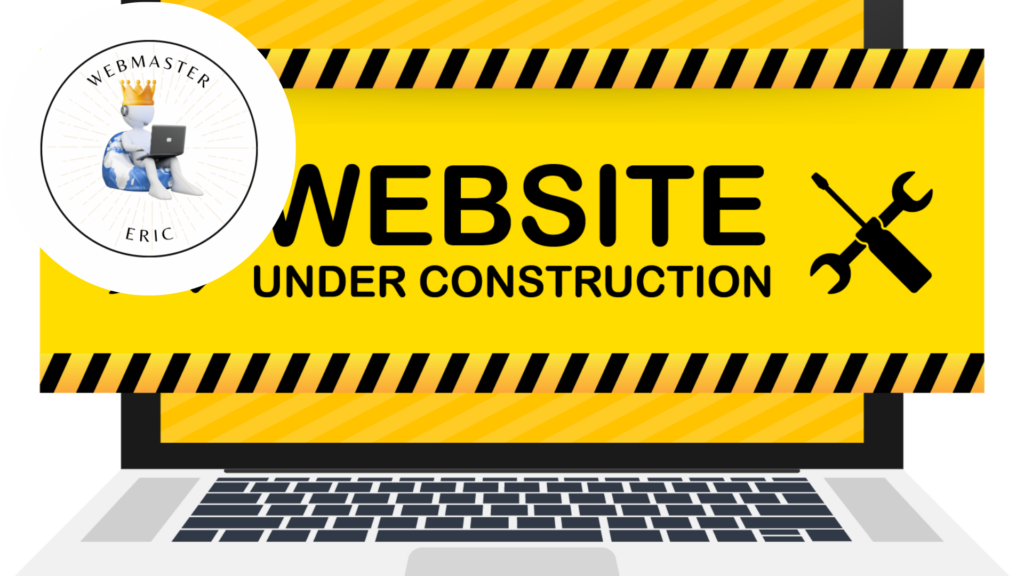
Web Development Websites: A Comprehensive Guide
Web development websites are essential tools for creating and maintaining an online presence. Whether you’re a business owner, a freelancer, or someone with a passion project, understanding web development is crucial. This guide, presented as a conversation between Webmaster Eric and a potential customer, will walk you through the process of building and managing a website. By the end, you’ll have a clear understanding of what it takes to create a successful online platform.
Scene 1: The Importance of Web Development
Potential Customer: “Eric, why is web development important for my business?”
Webmaster Eric: “Web development is crucial for creating a functional and attractive online presence.”
Web development is the backbone of any website. It involves creating the structure, design, and functionality that make a website work. A well-developed website can enhance your brand’s credibility and make it easier for potential customers to find and trust you. Whether you’re selling products, sharing information, or building a community, web development is a powerful tool for growth.
Scene 2: Understanding the Basics of Web Development
Potential Customer: “What are the basics of web development I should know?”
Webmaster Eric: “Web development involves front-end and back-end development, each with specific roles.”
Web development is divided into two main areas: front-end and back-end development. Front-end development focuses on the visual aspects of a website, such as layout and design. Back-end development involves server-side operations, databases, and application logic. Understanding these basics helps you communicate effectively with developers and make informed decisions about your website.
Scene 3: Choosing the Right Web Development Tools
Potential Customer: “What tools do I need for web development?”
Webmaster Eric: “Select tools based on your needs. Popular options include HTML, CSS, JavaScript, and various frameworks.”
Choosing the right tools is essential for efficient web development. HTML, CSS, and JavaScript are fundamental technologies for building websites. Frameworks like React, Angular, and Vue.js can streamline development processes. Consider your project’s requirements and your team’s expertise when selecting tools. The right tools can significantly impact your website’s performance and user experience.
Scene 4: Planning Your Website’s Structure
Potential Customer: “How should I plan my website’s structure?”
Webmaster Eric: “Create a sitemap to outline your website’s main pages and their connections.”
A sitemap is a visual representation of your website’s structure. It helps you organize content and plan navigation. Common pages include Home, About, Services, Blog, and Contact. A clear structure improves user experience and makes it easier for visitors to find information. It also helps search engines understand your site, improving your SEO.
Scene 5: Designing for User Experience
Potential Customer: “What should I consider when designing my website?”
Webmaster Eric: “Focus on a clean layout, easy navigation, and appealing visuals to enhance user experience.”
A well-designed website is visually appealing and user-friendly. Use a clean layout with plenty of white space. Ensure navigation is intuitive, allowing users to find information quickly. Incorporate high-quality images and graphics to engage visitors. A good design keeps users on your site longer and encourages them to explore more.
Scene 6: Ensuring Mobile Responsiveness
Potential Customer: “Is it important for my website to be mobile-friendly?”
Webmaster Eric: “Yes! A mobile-responsive site ensures a good user experience on all devices.”
With many users accessing websites on mobile devices, having a mobile-responsive design is crucial. This design automatically adjusts to different screen sizes, ensuring your content is accessible to everyone. A mobile-friendly site improves user experience and can boost your search engine rankings, helping you reach a wider audience.
Scene 7: Implementing SEO Best Practices
Potential Customer: “What is SEO, and why is it important?”
Webmaster Eric: “SEO helps your website rank higher in search engine results, driving organic traffic to your site.”
Search Engine Optimization (SEO) is the practice of improving your website’s visibility on search engines. Use relevant keywords in your content, titles, and meta descriptions. Optimize images and ensure your site loads quickly. Good SEO practices can significantly increase your website’s traffic, helping you reach more potential customers.
Scene 8: Testing and Launching Your Website
Potential Customer: “What do I need to do before launching my website?”
Webmaster Eric: “Test your site thoroughly. Check for broken links, typos, and ensure everything works smoothly.”
Before launching, it’s essential to test your website. Ensure all links work and that the site loads quickly. Review your content for errors and make sure it is clear and engaging. A smooth launch can set the tone for your website’s success, making a positive impression on your visitors.
Scene 9: Maintaining and Updating Your Website
Potential Customer: “How do I keep my website up-to-date?”
Webmaster Eric: “Regularly update content, fix bugs, and improve features to keep your site relevant and functional.”
Maintaining your website is crucial for long-term success. Regularly update your content to keep it fresh and engaging. Monitor your site for bugs and fix them promptly. Consider user feedback to improve features and functionality. Consistent maintenance ensures your website remains relevant and provides a positive user experience.
Scene 10: Utilizing Analytics for Improvement
Potential Customer: “How can I measure my website’s success?”
Webmaster Eric: “Use analytics tools to track visitor behavior and site performance. This data helps you make informed decisions.”
Analytics tools provide insights into how visitors interact with your website. They can track metrics like page views, bounce rates, and conversion rates. By analyzing this data, you can identify areas for improvement and optimize your site for better performance. Regularly reviewing your analytics helps you stay on top of trends and make data-driven decisions.
Conclusion
“Web Development Websites: A Comprehensive Guide” is a conversational guide between Webmaster Eric and a potential customer, detailing the essentials of web development.
It emphasizes the importance of web development for creating a functional and attractive online presence, crucial for business credibility and customer trust.
The guide covers the basics of front-end and back-end development, the selection of appropriate tools like HTML, CSS, and JavaScript, and the importance of planning a website’s structure with a sitemap.
It also highlights the significance of user experience design, mobile responsiveness, and SEO best practices for higher search engine rankings.
Before launching, thorough testing is advised to ensure a smooth user experience.
Post-launch, regular maintenance and updates are necessary to keep the site relevant.
Finally, utilizing analytics tools helps track visitor behavior and site performance, enabling data-driven improvements.



